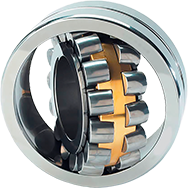
Tapered roller bearing is basically the most important variation of bearing types in all industries say automotive, heavy machines, etc. The choice of such bearing partner manufacturing is crucial for features such as durability, efficiency, and performance. Some top issues for consideration in the selection of a tapered manufacturer are as follows:
A well-reputed and experienced manufacturer should have international quality standards such as ISO 9001, TS 16949 (automotive), and other relevant ones according to that industry. Such certification guarantees stringent measures in quality control to enable it to perform reliably.
The life and longevity of tapered roller bearings are from the quality of materials it bears. Subsequently, the companies should possess high-grade alloy steel, in particular SAE 52100 chrome steel, in order to manufacture it. This gives the bearings awesome wear resistances, hardness, and load-carrying capacity. The ideal manufacturer should demand highly strict checks for material quality.
Advanced technology or manufacturing methods such as CNC machining, precision grinding, and heat treatment are indispensable in obtaining high-performance bearings. The advanced technologies of a manufacturer also ensure high accuracy with reduced friction for extended service life.
Each industry has its distinct requirements when it comes to bearings. A good manufacturer should thus be able to offer the possibility of customized solutions based on dimensions, load-bearing capabilities, lubrication, and coatings. Customization ensures that the companies can have special bearings for their specific applications.
The best designs and solutions for reduced friction and higher efficiency come from companies investing in R&D. Suppliers making waves in innovativeness and aligned with the new trends within the industry stand as the best possibility of partnership for the long run.
Manufacturers ensure,” through stringent tests such as interferometry loading effects, wear effects and failure simulation tests, that performance and quality are absolutely matched. Such bearings work well in the severest conditions for quite long time periods.
For any Tapered bearing manufacturer, an efficient supply chain can be complemented by good distribution channels when the end customers are into international business; hence, lengthy delivery times and operational downtime can be eliminated.
There are cost factors here, but no part of them should go beyond quality compromise. Companies with the best levels of manufacture offer cheap but very value-adding solutions that are equally committed to performance.
Considering good customer service, good technical support, and afterward, a good manufacturer gives technical advice, troubleshooting, and warranty support to maintain good customer satisfaction.
A high-quality tapered roller bearing is manufactured through the use of raw materials: mostly SAE 52100 chromium steel, which is really hard, wear resistant, and corrosion resistant. Raw steel goes through the steps of forging through heating and then machining into highly accurate inner and outer rings, raceways, and rollers, Designated Under Specified Tolerances.
The formed components undergo a heat treatment process that is the most critical in fortifying them, drying them by controlled heating, and instant quenching, developing the required hardness and wear resistance. These are followed then by grinding and superfinishing, giving smoothness to the parts, thus reducing friction and ensuring smooth movement with the best fitting between rollers and raceways.
The assembly now is a matter of locating the tapered rollers between the outer and inner rings, held in place by a cage for proper alignment and spacing. Each bearing is then put through strict testing to ensure dimensional correctness, load rating, and smooth rotation. They get treated with anti-corrosion substances and lubricants, packed for use in industry, and subjected to many other stringent quality inspections, such as the load test and wear simulation. Careful manufacturing processes in such a manner thus guarantee tapered roller bearings for very exceptional performance, longevity, and efficiency in diversified industries.
Depending on the load requirement and environmental condition, tapered roller bearings are configured in different designs satisfying certain industrial demands. Among such, the most commonly encounttered single-row tapered roller bearing is that one where both radial and axial loads are carried.
This finds extensive applications in several automobiles, gearboxes, and agricultural machines as well. In double-row tapered roller bearings, a structure is created which allows more stability in combination with thorough carrying capabilities, mostly used in construction and mining machines. They are usually applied in steel mills and rolling mills to where an axial load and radial load come to heavy scenarios.
Sealed tapered roller bearings will not be contaminated, hence they are more long-lasting than maintenance-requiring ones. They are therefore best suited for trucks, off-road equipment, and other harsh conditions.
They also produce specialized tapered roller bearings to niche markets such as those involving aerospace and precision manufacturing, which have high-temperature resistant, corrosion-resistant coatings, or light weight materials.